Today in Tedium: The history of ordinary things can be fascinating while offering insight into our immediate future. We’ve previously noted how artificial ice and assorted refrigeration/cooling technologies helped change demographics in the American South. Recent news from the Census Bureau confirms this trend as northern states like Michigan and New York lost population while the south, Texas and Florida in particular, gained. But the history of the ordinary can be hidden by ubiquity, tedium, and general disinterest. Unnoticed until they cry out for attention. Today’s Tedium is looking at the history of New York City restaurant inspections and the variety of ways restaurants cope. (And yes, the pandemic has certainly had an impact.) — Andrew @ Tedium
Also, a quick correction—Friday’s piece, in which we highlighted the rediscovery of “Goodbye Horses” artist Q Lazzarus, misstated the name of Kelsey Chapman, a key figure in uncovering the musician, and didn’t properly highlight her reporting of that effort. We regret the error on that and wanted to flag it here.
NanoVMs, a unikernel infrastructure that runs software faster and safer than Linux, has an investing campaign with StartEngine. The company has 2 issued patents and has raised 2.4M from investors such as Bloomberg Beta. Now you too can invest from $100.
15,000
The number of restaurants in New York City, as reported by The New York Times, on March 25, 1917. This number represents one of the first accurate counts of commercial restaurants in NYC during the modern era. The city’s Board of Health had recently required restaurants to obtain permits and submit to inspection. Then, as now, owners were not too pleased with government oversight.
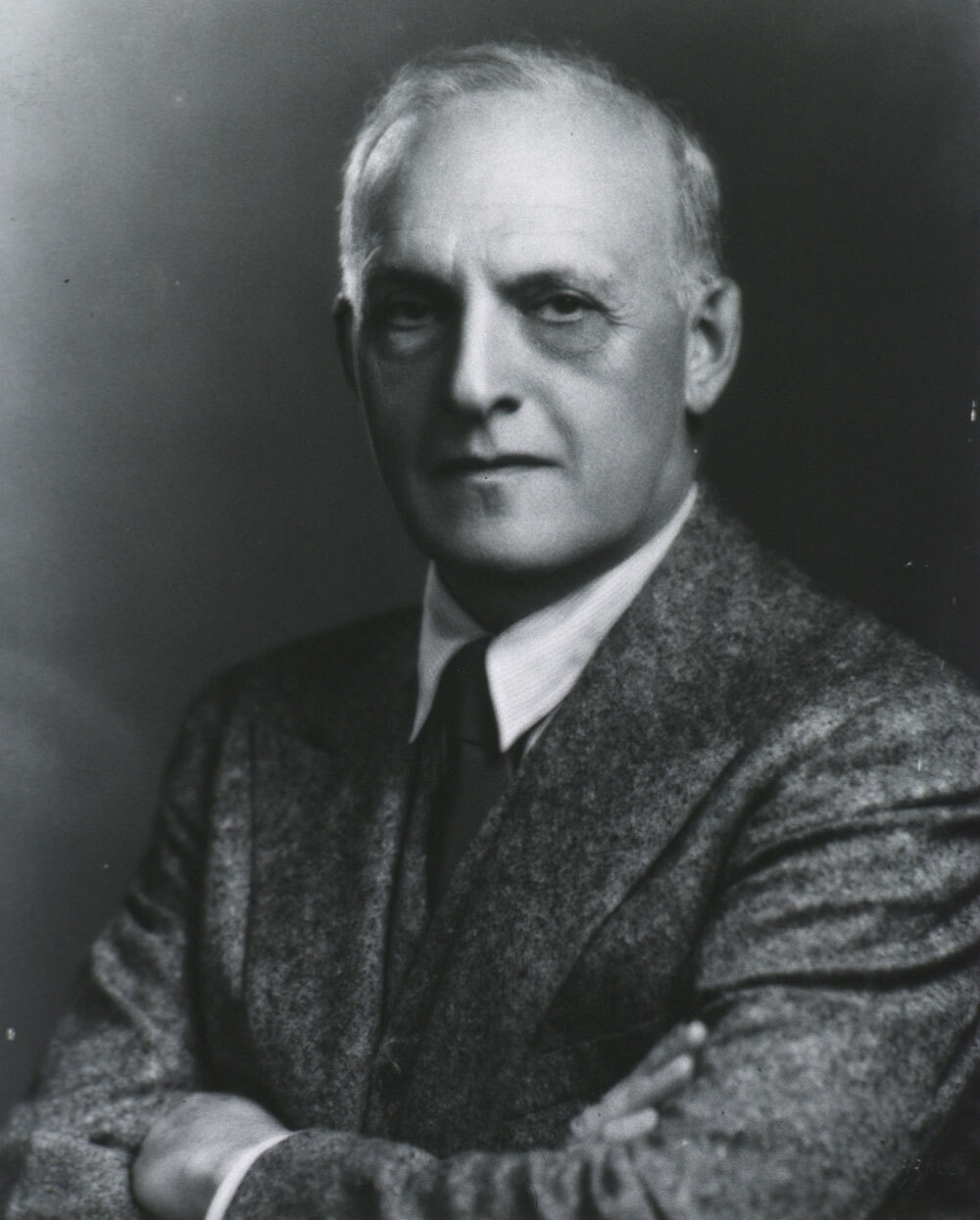
(via National Institutes of Health)
The little-known hero behind NYC restaurant inspections
There is no shortage of great New Yorkers, the people that helped shape the city and its culture. How one measures impact can vary. The wealthy and influential find their names on street signs, convention centers, and airports. A year into the COVID-19 pandemic, however, there is a renewed appreciation for those that helped lay the foundation for the city’s hospitals and medical care. In this regard, there are few New Yorkers greater than Dr. Sigismund Goldwater.
A graduate of Columbia University and NYU medical school, Dr. Goldwater was a recognized authority in hospital construction. Among the numerous posts he held over a distinguished career included Superintendent at Mount Sinai Hospital, president of the American Conference on Hospital Service, and vice president of the New York Academy of Medicine. In recognition of his career and experience, he was appointed City Commissioner of Hospitals from 1934 to 1940. During his administration, Dr. Goldwater oversaw the construction of 25 new hospital buildings. His Times obituary credits him with adding more than 5,000 hospital beds to city capacity.
While his work in hospital administration and construction helped lay the foundation for New York City as a world-class center for health care, Dr. Goldwater has a legacy a bit more meaningful to modern restaurateurs. In 1914, Mayor John Purroy Mitchel was newly elected and in need of a health commissioner. His first choice, Dr. Goldwater, didn’t really want the job but finally acquiesced on the strong insistence of his predecessor.
About six months after taking over the role, now Health Commissioner Goldwater announced a couple of general initiatives in public transportation and dining to ensure general cleanliness, pointing out to the Times that, “...the Sanitary Code at present did not call for regular inspection as in the case of bakeries and meat markets.” His solution was to require permits and require commercial restaurants to be inspected on an annual basis.
Public health, especially regarding sanitary food handling practices, had grabbed media attention in the early 20th century in part to Upton Sinclair’s The Jungle. Sinclair, an investigative journalist, went undercover to detail the working conditions in meat packing facilities. His account of rat infested factories and spoiled meat products shipped to consumers provoked outrage. Unfortunately for Sinclair, who was trying to shed light on the conditions of workers, readers were incensed to learn what was in their food. By 1905, the federal government had passed legislation to create what would become the Food and Drug Administration (FDA).
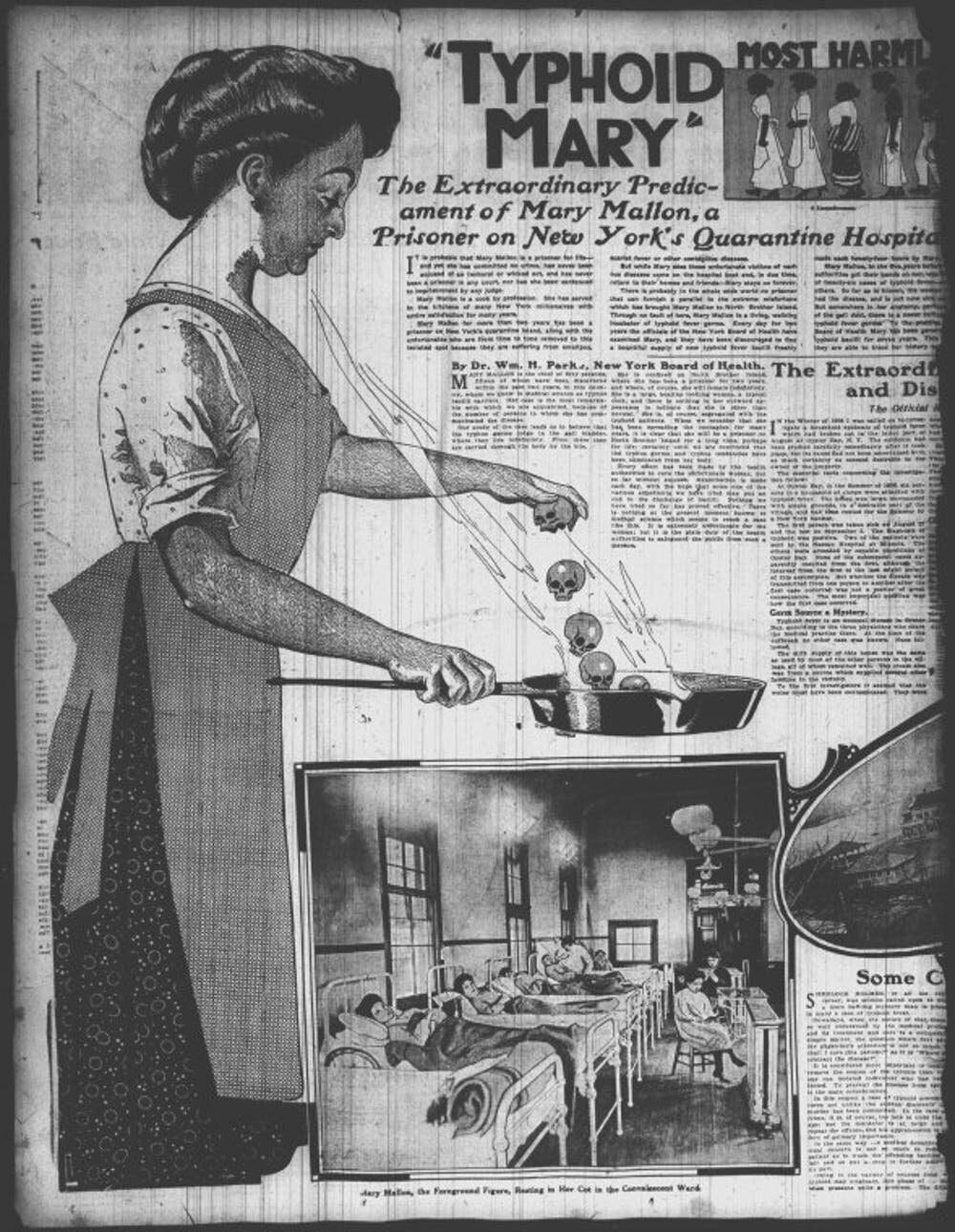
The New York American’s coverage of Typhoid Mary helped make her tale prominent to New Yorkers. (via MedicalXpress)
Another unique circumstance that kept food safety in the minds of New Yorkers was the terrible tale of Mary Mallon, better known as Typhoid Mary. A private cook that was also an asymptomatic carrier of typhoid, Mary Mallon became infamous for her condition, the number of people she infected, and her refusal to cooperate with safety guidelines.
There was another reason for the attention Mary Mallon received, explains Claire Stewart, a chef and hospitality management professor at the New York City College of Technology. “Typhoid was considered a disease of the poor and associated with immigrants and overcrowded tenements,” she said. “Mary Mallon spent a lot of her career cooking for wealthy people, so her bringing typhoid to the upper classes caused a lot of alarm.”
Still, by the time Dr. Goldwater became health commissioner, New York City had yet to regulate restaurants, creating a range of dining experiences and anxiety about the status of any given kitchen.
One concerned citizen wrote to the Times in a letter titled, “We Need Dainty Waiters.”, “In these days of pure food laws and Boards of Health… I would like to ask what assurance, if any, has the public that in our hotels, restaurants, and clubs proper supervision over their employes is exercised so as to insure us a fair degree of cleanliness on the part of those who handle the food we are to eat? This inquiry is prompted by occurrences coming under the personal observation of the writer, showing that employes in so-called high-class hotels, clubs, and restaurants are often guilty of practices which would not be tolerated in our own homes. One large restaurant in this city requires its waiters to pass an inspection by a manicure before they are allowed to handle food for its patrons.”
After Dr. Goldwater noted that other cities had also adopted regular restaurant inspections, and noting the potential for additional revenue via fines and permit fees, the city agreed. Now they just had to get some 15,000 owners and operators to comply. Should be easy, right?
$120K
The amount of money one restaurant consultant confessed to making annually by helping guarantee favorable grades during city health inspections. The restaurant inspection division of the NYC Department of Health came under extreme scrutiny for corruption during the 1980s with prosecutors referring to the agency as a “criminal enterprise”.
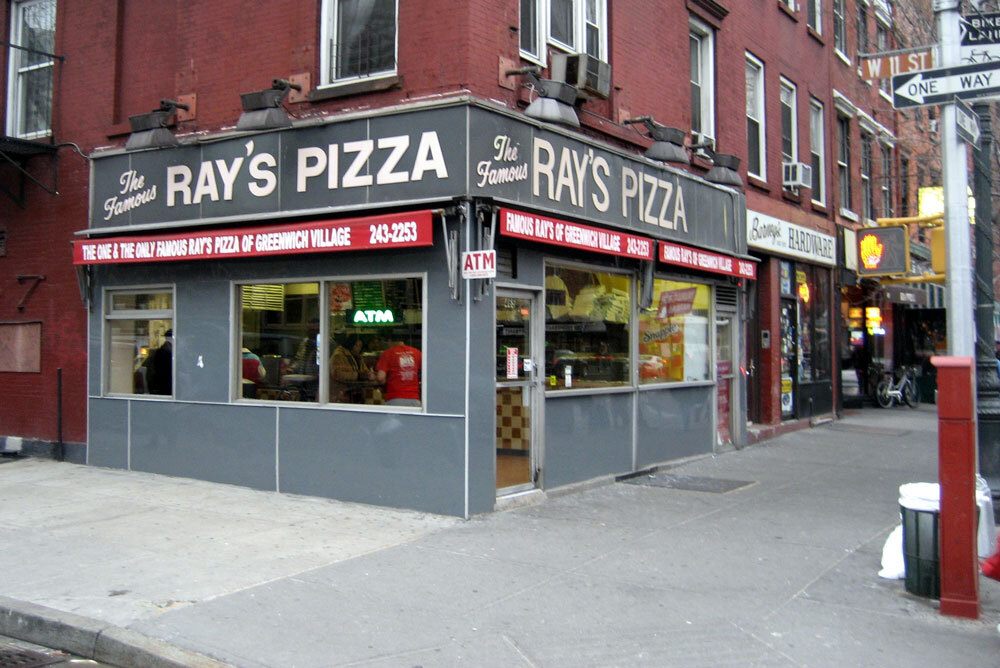
Corruption, incompetence, and confusion? Yeah, that sounds like NYC government
The initial rollout of NYC health inspections wasn’t exactly smooth. Infrastructure had to be created for the new agency and guidelines had to be established. Almost immediately, owners cried foul over favoritism, as the initial announcement noted that a few select establishments had been fast tracked to approval and favorable ratings.
And there was general confusion over what exactly, these new restaurant inspectors would actually be doing. One 1916 Times article explaining the new system clarified in its headline, “COOKING NOT CRITICIZED.”, also included this wonderful statement, “The department wishes to emphasize that its inspections and resulting grading have nothing to do with good or bad cooking. Its rating relates solely to sanity and hygienic conditions…” To be fair, the Department of Health’s rating system, which labeled restaurants as “good”, “fair”, and “bad”, allowed for a wide amount of interpretation.
The health department itself, along with the media, also didn’t seem to have an understanding of the impact the new rating system would have on public confidence in restaurants. Just look at this spectacular 1917 headline:

This was, of course, a bit of an error as the article clarifies that inspectors found seven additional restaurants that had attained a “good” rating following reinspection. More interestingly, the article also notes rumors that the mayor was seeking to halt restaurant inspections and “hush up” the resulting reports. Early inspections of New York’s restaurants were not entirely encouraging as 256 restaurants of the 265 inspected “were found to be in bad shape, that is, failing to meet more than half of the fifty requirements laid down by the department.” So, in fact, there were nine good restaurants.
Coverage in the coming years stress improvement of sanitary conditions, before a statis between restaurants and the health department developed. Considering the sheer volume of restaurants in NYC and the relatively small number of restaurant inspectors, overbearing vigilance was never a real concern for owners. By the 1950s, the department had to double its permit fee for restaurants from $10 to $20 to help defray the costs of inspection.
Despite what compliant Times reporters included in their stories, the sanitary conditions hadn’t necessarily improved by the 1970s. A part of that was limited public liability on the part of restaurant owners. In general, inspectors would issue fines when violations were discovered. However, the result of a restaurant’s health inspection was kept confidential until the unlikely event an owner was convicted of violating health code. Otherwise, the sanitation status of any given restaurant was kept with the city and difficult to access.
Inspections of 845 restaurants during the early 1970s “including some that are world-famous” found that 86 percent were in violation of the health code. Clearly, the city’s ranking system needed an overhaul and officials began to push for public displays of a restaurant’s sanitation scorecard. Instead, changes were made to make the names of offending restaurants public following a second inspection. After a failed third, the establishment can be closed. Along the way, owners can appeal the inspection results to administrative judges.
This led to increased media scrutiny as the Times began publishing lists of offending restaurants, creating public accountability for the first time. These changes also made restaurant inspectors a lot more powerful than they had previously been. In short order, prosecutors would accuse a significant percent of New York City’s restaurant inspectors of engaging in mafia-style corruption.
With the conviction of 9 health inspectors in 1989, the Department of Health finally ended an era of rampant corruption. Then current and past health inspectors were accused of engaging in a wide ranging conspiracy to extort bribes from restaurant owners. In some cases, this was done with a corporate veneer under the guise of consulting fees. One defendant testified that his client’s included Beefsteak Charlie’s and Woolworth’s among 1,000 other restaurants. Another said they received $12,000 a month from a corporate group that owned more than 250 NYC restaurants.
In all, the Justice Department accused more than half of the city’s 70 health inspectors in the scheme. A total of 46 would either plead guilty or be convicted of extortion. The scheme was complicated, incorporating consultants and inspectors, who would send kickbacks to supervisors. Defendants were convicted using racketeering laws (RICO) more commonly used against mafia bosses.
The episode was finally the impetus for the Department of Health to make sweeping changes to restaurant inspection and accountability. It only took them until 2010 to actually implement them.
11,000
The increase in the number of restaurants in New York City between 1989 and 2019. The city went through a rough economic period in the 1960s and 70s, decreasing the number of restaurants to pre-World War I levels. By 2019, the city had more than 23,000 restaurants boosted largely by chains and corporate groups.
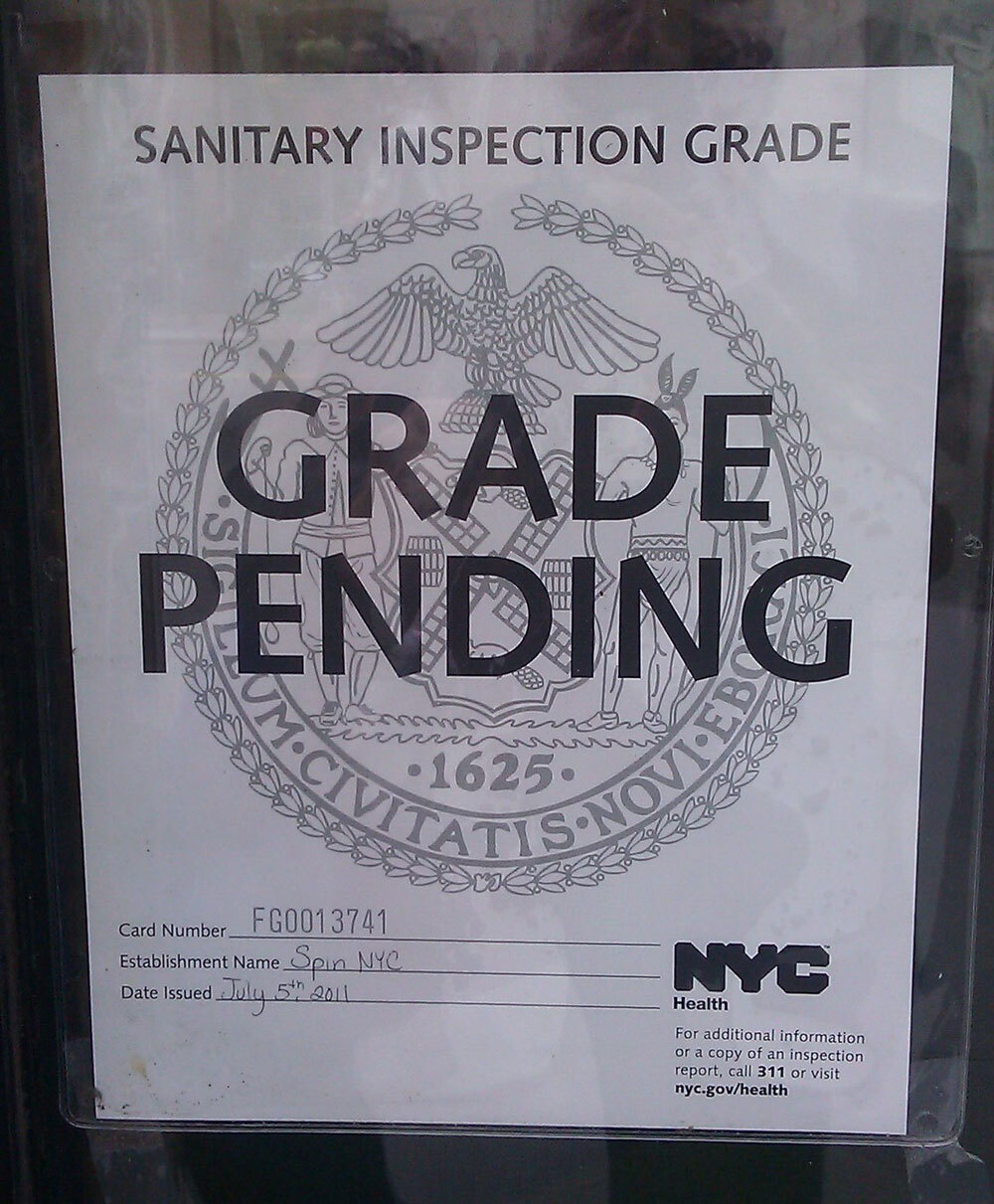
Not a great sign when you see this grade on a restaurant. (Mike Licht/Flickr)
NYC restaurants finally make the grade
Since 2010, all New York City restaurants have a letter grade (or should anyway) prominently displayed in their window. The system is intuitive enough, with only three levels (A, B, or C, with A being the best). Some places will also have a “Grade Pending” sign that indicates it got a B or a C and are scheduled for another round of inspection. During the first year of the letter system, some 83 percent of NYC restaurants had received an A. By 2017, that number had increased to 93 percent. Most city restaurants keep their kitchens clean.
This isn’t to say that all is hunky dory in the city’s restaurants. One recent New York Magazine article penned by a new restaurant owner detailed the omnipresent fear of health inspections among kitchen staff, especially noting the balance between running a busy kitchen against the department’s notorious point system that can mean the difference between an A or a B:
Then, I noticed another layer of crazy being added to the mix. The cooks started to act extremely paranoid. They started to yell at each other about the DOH and points.
“Dumbass, if you leave that beef out, that’s points!”
“The ice machine hasn’t been cleaned—that’s automatic points!”
“Kill that fly! That’s a point!”
The New York City health code is decidedly onerous, but that’s largely out of necessity, explains Professor Stewart.
“The NYC health code is more rigorous than other cities. It is the same with our fire codes. They have to be because we are living on top of each other. We are crowded,” she says, adding that the city’s high unionization rate and insurance incentives create an experienced and better educated workforce that experiences minimal turnover.
The professional confidence of New York City’s hospitality industry may run high but fear of the health code is deep enough that some owners and staff devise their own systems to warn about inspections. As the owner of Bruno’s Pizza noted in his New York article: “They also came up with crazy schemes—special codes for the hosts to use, silent signals for cooks to alert one another—and plans that made me wonder if they were purposely trying to sabotage my business.”
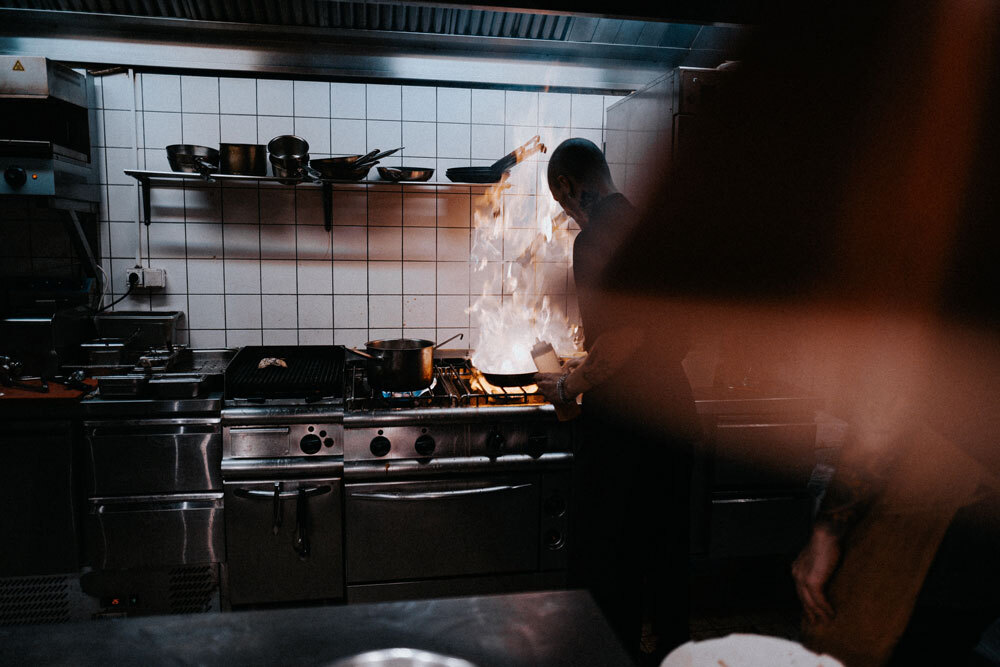
Some restaurants take the idea a little further and employ actual warning systems (such as buttons hidden by or on the host stand that activates a light or buzzer in the kitchen) that can give kitchen staff as much as five minutes notice before a health inspection. (Note: This has been previously reported but Tedium has independently confirmed the practice in restaurants in Manhattan and Brooklyn.)
“There are some things that can certainly happen in five minutes that can save a letter grade,” Stewart says when asked about the practice. “First of all, probably no one in the kitchen was wearing a hat. In a big hotel, for instance, a porter will race around with a box of disposable chef hats … And the hollandaise sauce will be thrown out. No batch of hollandaise can withstand an inspection.”
All in all, should these practices concern diners?
“Like maintaining sanitation in a kitchen, so much is based on the honor system,” Stewart offered. “As a customer, you can only hope that workers have washed their hands. You don’t know for sure. Same with whether an establishment is following pandemic protocol behind closed doors.”
The same systems that restaurants use to warn their staff about health inspections can be (and are being) used to warn about COVID protocol checks, like masks for all staff. Note: Tedium has also confirmed this.
Despite concerns of lackadaisical COVID compliance, Stewart is unflappable in her allegiance and trust of kitchen professionals to maintain a sanitary environment.
“I can say, truthfully, I have a lot of faith in the people who work in kitchens,” she said.
In general, the New York City restaurant industry thinks a lot of itself. Before the pandemic, obtaining employment in a city restaurant without city experience was pretty difficult. Volume and density alone make work in a NYC restaurant unique to pretty much anywhere in America. Employment as a waiter in a Times Square restaurant on its own is a special type of hell no human being should be subject to.
As the pandemic clears and rents return to their astronomical norm, New York City restaurants will again become vibrant and cramped and frustrating and kind of magical. And if you’ve known the crew working the counter for years, you never notice the letter in the window.
--
Thanks again to Andrew for another great piece. Find this one an interesting read? Share it with a pal!
And thanks again to our sponsor NanoVMS, which is looking for investments at this time.





